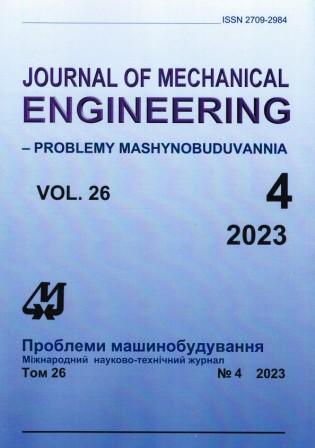Комбінування електро- і радіохімічних процесів отримання водню і кисню
Аннотация
Показано, що підвищення ефективності процесу одержання водню може бути забезпечене шляхом інтеграції радіохімічних та електрохімічних процесів. У цьому випадку отримуваний ефект залежить не тільки від прямого радіолізу води, а й від залучення в процес електролізу енергії іонізуючого випромінювання для збудження молекул води, які піддаються електролізу, що призводить до зниження споживання електроенергії для розкладання її газових компонентів. Наведено аналіз основних факторів, що впливають на зниження електроспоживання при електролізі, і показано спорідненість спектрів радикал-іонів, що беруть участь у радіаційних та електрохімічних процесах розкладання води. У результаті радіаційного впливу починається найбільш енергоємна стадія розкладання води, пов’язана з розривом міжмолекулярних зв’язків та утворенням активних частинок, що залучаються до електрохімічного процесу. Встановлено, що утворення водню збільшується завдяки додаванню його прямого виходу при радіолізі й опосередкованого одержання при електролізі, ініційованому активаційними ефектами, зумовлених іонізованим випромінюванням. Показано, що для підвищення прямого радіолітичного виходу водню в міжелектродному просторі електролізера слід розмістити елементи, які містять нанорозмірний порошок діоксиду цирконію. Доведено також, що опромінення діоксиду цирконію, поміщеного у воду, призводить до збільшення в 4 рази виходу водню в порівнянні з варіантом опромінення чистої води. Для підвищення коефіцієнта використання енергетичного потенціалу ядерного палива на АЕС доцільно для застосування запропонованої технології використовувати енергію ТВЕлів, що розміщуються в басейнах витримки відпрацьованого ядерного палива. Це забезпечить утилізацію енергії іонізуючого випромінювання, яке в існуючих технологіях безповоротно втрачається, тому що відводиться у вигляді низькотемпературних теплових викидів у навколишнє середовище, що призводить до теплового забруднення атмосфери.
Загрузки
Опубликован
Выпуск
Раздел
Лицензия
Copyright (c) 2024 В. В. Соловей, Janis Kleperis, М. М. Зіпунніков

Это произведение доступно по лицензии Creative Commons «Attribution-NoDerivatives» («Атрибуция — Без производных произведений») 4.0 Всемирная.
Авторы, публикующиеся в этом журнале, соглашаются со следующими условиями:
- Авторы оставляют за собой право на авторство своей работы и передают журналу право первой публикации этой работы на условиях лицензионного договора (соглашения).
- Авторы имеют право заключать самостоятельно дополнительные договора (соглашения) о неэксклюзивном распространении работы в том виде, в котором она была опубликована этим журналом (например, размещать работу в электронном хранилище учреждения или публиковать в составе монографии), при условии сохранения ссылки на первую публикацию работы в этом журнале.
- Политика журнала позволяет размещение авторами в сети Интернет (например, в хранилищах учреждения или на персональных веб-сайтах) рукописи работы, как до подачи этой рукописи в редакцию, так и во время ее редакционной обработки, поскольку это способствует возникновению продуктивной научной дискуссии и позитивно отражается на оперативности и динамике цитирования опубликованной работы (см. The Effect of Open Access).

